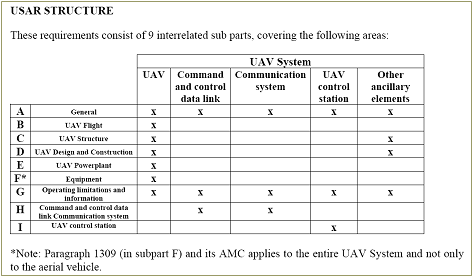
Systems Engineering can be described as an interdisciplinary process that ensures that the customer's needs are satisfied throughout a complex system's entire life cycle. Systems engineering deals with work-processes and tools to handle such projects, and it overlaps with both technical and human-centered disciplines such as control engineering, industrial engineering, organizational studies, and project management. This interdisciplinary process can be comprised of the following tasks:
Renaissance Consulting extensive experience in aeronautic, space, security and defence projects (specially research, safety-critical, unmanned and control ones) is a guarantee to provide you technical support in complex projects. |
 |
|---|
Renaissance Consulting has developed a USAR-based (i.e. STANAG 4671) methodology SysEngUAS and a series of aids to apply System Engineering to UAS for a fixed-wing UAV with a MTOW between 150 and 20000 Kg. A similar approach will be developed for a fixed-wing Light UAV (i.e. SysEngLUAS) and a rotary-wing UAV (i.e. SysEngRUAS) as soon as their technical airworthiness requirements (i.e. STANAG 4703 and STANAG 4702 respectively) are authorised: |
|
|---|---|
|
 |
